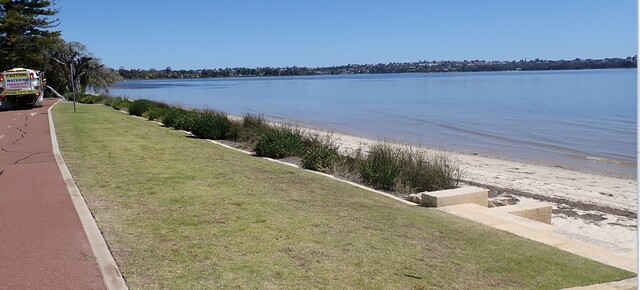Australia has watched nervously as fires raged across the Blue Mountains and threatened heavily populated areas of metropolitan Sydney.
New South Wales Premier Barry O’Farrell declared a state of emergency across the state on October 20, giving emergency services personnel power to evacuate areas, order power and gas supplies be shut off, and to shore up or pull down buildings.
As LG Focus went to print, crews from the New South Wales Rural Fire Service (NSW RFS) and National Parks and Wildlife Service were continuing to fight a blaze in the Howes Swamp area, 60 kilometres north of Windsor.
Given the severity of the fires so early in the official bushfire danger period (October 1 to March 31), questions have been raised about the effects of climate change on bushfire risk across Australia.
A Climate Council report said climate change was “influencing both the frequency and intensity of extreme hot days” and thus increasing the probability of extreme fire weather days.
While acknowledging that spring bushfires in NSW were not unusual, the report said exceptionally dry conditions and above average temperatures had influenced the severity and scale of the fires.
The Climate Council is due to release a report on the link between bushfires and extreme weather in November.
In an interview with CNN, United Nations climate chief Christiana Figueres said it was ‘absolutely clear’ that science was showing increasing heat waves in Australia would mean wildfires continuing in intensity and frequency.
Prime Minister Tony Abbott has said he does not believe there is a link between climate change and the NSW fires.
“Climate change is real as I’ve often said and we should take strong action against it, but these fires are certainly not a function of climate change, they’re just a function of life in Australia.”
Councils deal with disaster
The latest bushfires caused the damage and destruction of thousands of homes along with natural areas and vital infrastructure.
While emergency service agencies are key to leading incident control in times of disaster, local government has a huge and varied role to play in support and recovery.
Disaster management expert Chris Madsen, co-director of QIT Plus, said local knowledge made councils crucial to implementation of disaster strategies.
“Councils fill the niche of ensuring the community knows where evacuation centres are, and high priority routes out of the region.
“The local knowledge and the accuracy of the council data will be of utmost importance to the emergency services.”
Among local government areas affected by the October bushfires were Blue Mountains, Lithgow, Muswellbrook, Port Macquarie-Hastings, Port Stephens, Singleton Wingecarribee and Wyong.
Blue Mountains City Council acted to protect the public by closing bushland reserve and walking tracks, providing drinking water advice for bushfire affected areas, and providing advice on seeking disaster assistance from state and federal agencies.
In Port Stephens, Council’s Environmental Health Unit have been conducting assessments on damaged and destroyed buildings in the Salt Ash area, and educating residents on the dangers of potential asbestos exposure in fire-damaged structures.
Several councils have also established mayoral appeals to help those affected by the fires.
Lithgow City Mayor Maree Statham said the Lithgow City Mayoral Bushfire Appeal Fund was in addition to appeals by organizations such as the Salvation Army and Red Cross.
“There have been many across the region that have been severely affected by these fires and the aim of the fund is to assist with projects to contribute towards the recovery and rebuilding of fire affected areas in the Lithgow and Blue Mountains Local Government areas.
“We have a great community and I have been overawed by the efforts to date by people wanting to assist with the fighting of the fires and now we need to help rebuild our communities after the fires.
Councillor Statham said as of October 25 over 200 homes had been lost across the region, and about 50,000 hectares of land burnt out.
Ms Madsen said that Australia’s experience in dealing with disasters such as floods, cyclones and bushfires in recent years had ‘polished our processes.’
“Disaster management at a local level is critical for the first responders. It’s the people that know the local area that do the best job of assisting the community, preparing the community and initiating the recovery and response.
“It’s something we do really differently in Australia, we really respect the local level.”
It is during the recovery phase that Ms Madsen said councils become very busy.
“Council has to ensure critical services are restored, things like water storage, roads, management of public areas and facilities. Any big event that’s had an impact on the beautification of an area, being able to restore confidence and wellbeing by quickly getting through and opening roads and clearing debris is positive rebuilding of the community.”
She said often councils were not acknowledged for their work supporting the ‘spirit’ of their community, or their preparation work.
“You find acknowledgement usually goes to the emergency services and they are doing a brilliant job, but what’s going on at a local government level at pre-planning stages is often what makes disaster response and recovery work.
“A lot of specialist mapping is done at local government level. Thinking through the major evacuation routes and priorities of road management, and managing your high vegetation areas – that preparation and planning in place is often used by emergency management services.”
With five months of what looks set to be a brutal fire season still ahead, just how well Australia has prepared for disaster remains to be seen.








